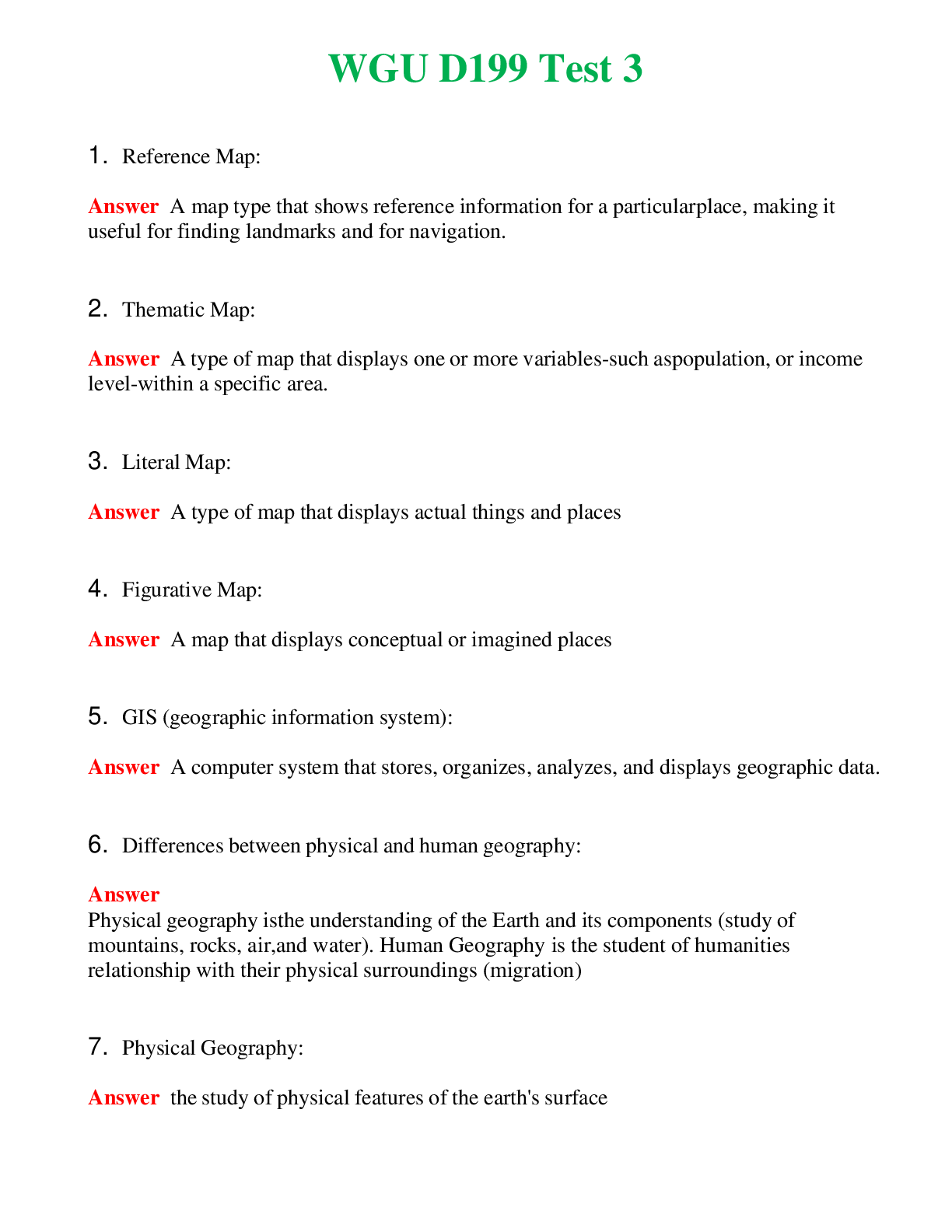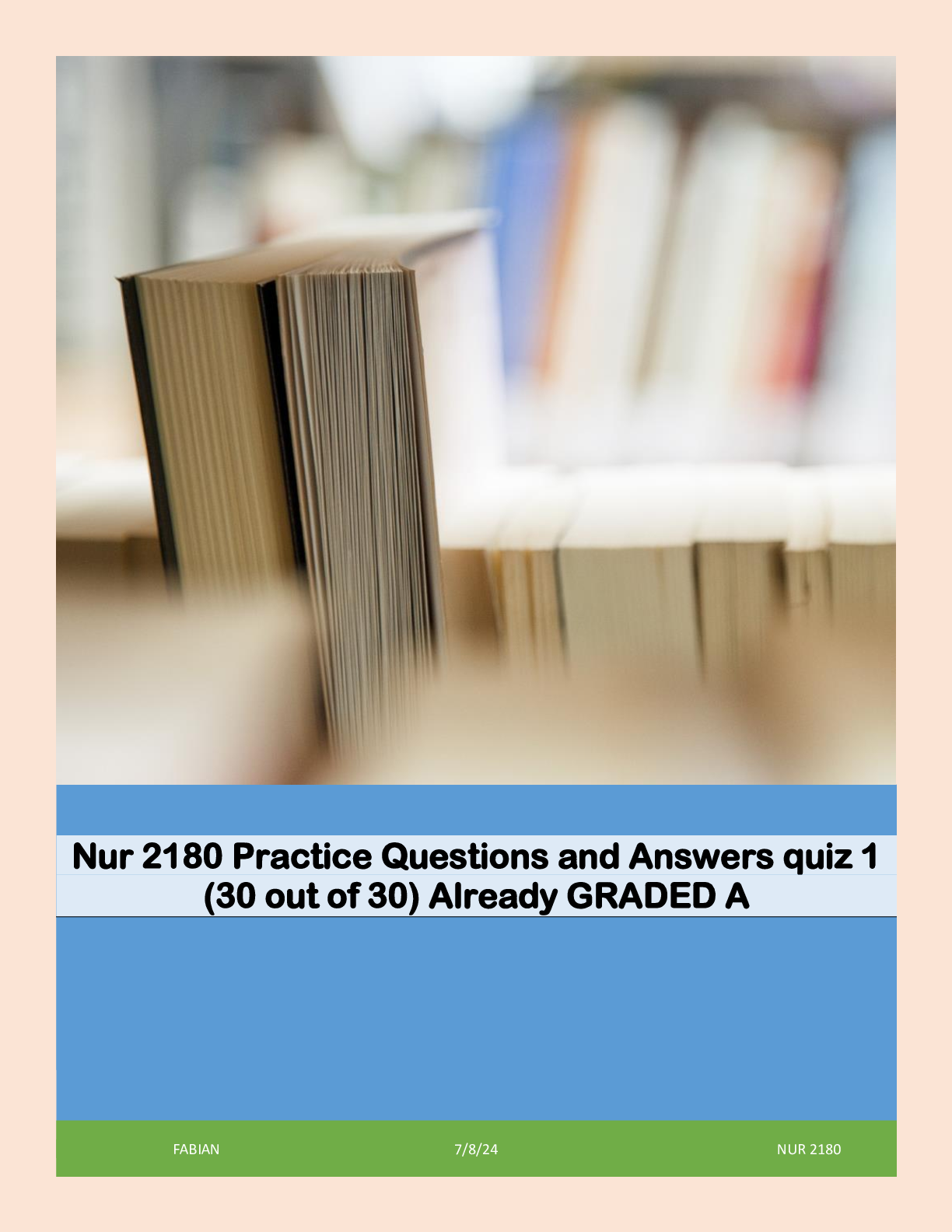
2024 WGU D199 Test 3 Actual Questions and Verified Answers ( Included ) 100% Correct
$ 10

Nur 2180 Practice Questions and Answers quiz 1 (30 out of 30) Already GRADED A
Pathophysiology > STUDY GUIDE > 6220 ADVANCED PATHO STUDY GUIDE FINAL (All)
6220 ADVANCED PATHO STUDY GUIDE FINAL SPRING SEMTER 2020 INSTRUCTOR: DR. CHERYL TOULOUSE SESSION 7: INTEGUMENTARY SYSTEM Describe normal skin and its function a. Skin is an organ b. Three layers ... i. Epidermis- composed of keratinocytes and scattered melanocytes 1. Epidermis undergoes keratinization, second most important protective mechanism 2. Epidermal cells produce keratins which are cytoskeletal proteins that are highly resistant to mechanical and chemical injury a. The keratin layer represents the final stage of epidermal cell differentiation b. Varies in thickness on diff anatomic sites c. Most prominent on the palms and soles 3. Keratinized epidermis provides limited protection against sunlight by preventing the penetration of light through the skin a. Keratinocytes are the principal cells of the epidermis i. They are aided by melanocytes, the pigment-producing cells 1. Located in basal layer 2. Produce a brown pigment packed into membrane-bound cytoplasmic 1 bodies(melanosomes) and transferred through the cytoplasmic process into keratinocytes 3. This transfer of pigment is was causes browning of skin when exposed to sunlight b. Keratinocytes with melanin are more resistant to UV light and protect the body against the sunlight more efficiently than non pigmented keratinocytes ii. Dermis-composed of connective tissue, blood vessels, nerves, and hair follicles, and skin adnexal glands, sebaceous glands (oil glandsconnected to hair follicles and secrete sebum made of fatty acids and waxy esters, lubricates skin, softens hair shaft, and is slightly acidic helps deter pathogens), sweat gland, iii. Subcutis/hypodermis- composed of fat tissue *Describe various skin infections* (on Final Study Guide) 1. Bacterial Infections a. Impetigo i. Caused by streptococcus pyogenes or staph. Aureus ii. Most often found on face of small children- the mouth and nose iii. Characterized by superficial pustules that rupture, leaving honey-colored scabs 1. “Pustule”= vesicle filled with pus 2. Yellow-honey looking crusting blisters containing pus 3. Skin lesions are itchy iv. Highly contagious; but responds w [Show More]
Last updated: 3 years ago
Preview 1 out of 127 pages

Buy this document to get the full access instantly
Instant Download Access after purchase
Buy NowInstant download
We Accept:

Can't find what you want? Try our AI powered Search
Connected school, study & course
About the document
Uploaded On
Oct 17, 2022
Number of pages
127
Written in
All
This document has been written for:
Uploaded
Oct 17, 2022
Downloads
0
Views
177
Scholarfriends.com Online Platform by Browsegrades Inc. 651N South Broad St, Middletown DE. United States.
We're available through e-mail, Twitter, Facebook, and live chat.
FAQ
Questions? Leave a message!
Copyright © Scholarfriends · High quality services·